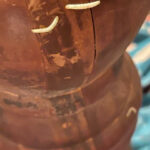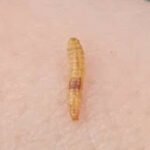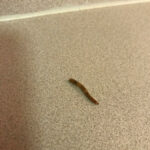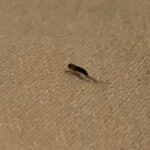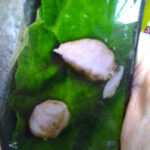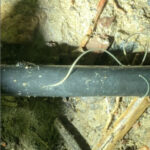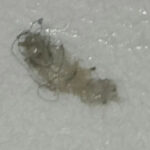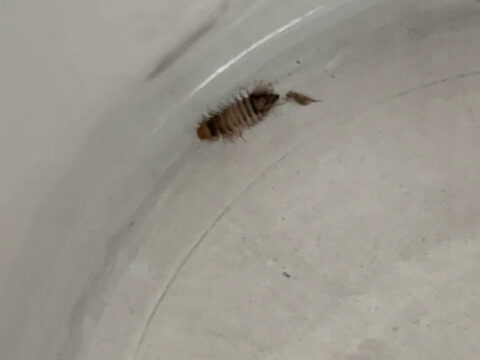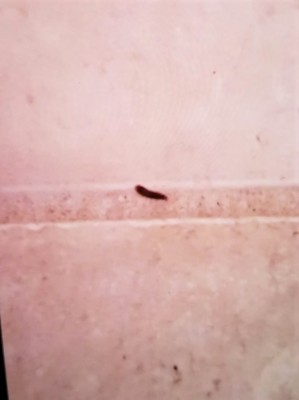
“I had been outside under a tree and came inside to use the bathroom”, writes Judy in her submission regarding the white, worm-like creature pictured below. “I found this in my underwear. I have never seen one again, inside or outside. I have found some pictures that look like it, but I’m not sure which one is which. The picture of the worm is on a washcloth and is small. Do I need to be concerned?” To begin with, we want to thank Judy for the photo and context, both of which have made it far easier for us to identify the worm-like critter she is asking about. We believe she has found a clothes moth caterpillar.
Clothes moth caterpillars are nothing to be concerned about in terms of health and safety. It is possible that the caterpillar fell on Judy when she was sitting under that tree: it is not an uncommon occurrence for caterpillars to enter homes like this. However, when it comes to clothes moth caterpillars specifically, there is also a good chance that they were already in Judy’s home. Clothes moth caterpillars feed on the animal fibers present in textile materials. Such materials include leather, silk, wool, and feathers. They will also eat loose hair and fur. For that reason, they can often be found on beds and in closets and wardrobes. So, it is not unreasonable to assume that these caterpillars may already have been roaming around wherever Judy keeps her clothing, and that is how it ended up in her underwear.
Now, while these caterpillars are not harmful by any means, they are quite destructive pests if left unchecked for long enough, especially when their numbers grow. They will chew holes straight through one’s clothes, towels, rugs, bed sheets, and other items. We recommend that Judy do a thorough check of her home to see if she can spot any more of the larvae. If she does, she needs to do a proper clean of her home. Vacuuming 2-3 times a week for a couple of weeks, and laundering any infested items (or potentially-infested items, such as those in close proximity to the infested items that are even partially made from animal fibers) is paramount to eliminating the infestation. Even if she cannot see larvae on a specific item, there could be eggs there that she cannot see. Likewise, preventative measures are also important, such as mending or replacing any torn window screens, sealing sizable cracks in walls and floors through which bugs can enter, and storing unused textile items in airtight containers.
In conclusion, we think that the white critter Judy found in her underwear is a clothes moth caterpillar. They are not dangerous, but they can destroy ones textile items, which is nonetheless unpleasant. We hope this helps, and we wish Judy the very best!
All About Worms is always free, always reader-supported. Your tips via CashApp, Venmo, or Paypal are appreciated! Receipts will come from ISIPP Publishing.
You might also find these guys interesting!




